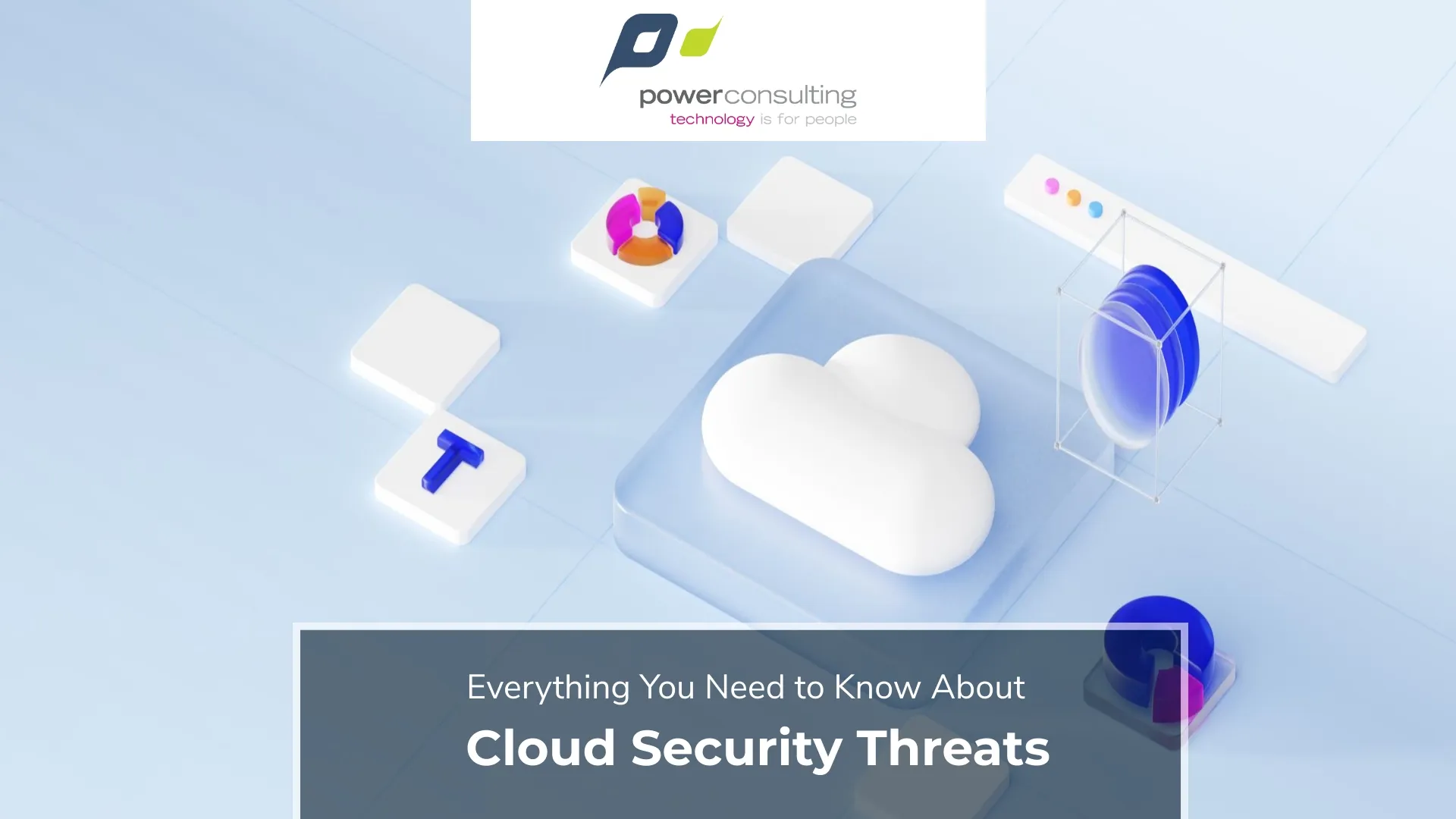
As more organizations migrate their data and operations to the cloud, the cybersecurity landscape shifts, revealing new vulnerabilities. A significant pain point for many businesses is the evolving nature of cloud security threats.
These threats not only pose risks to privacy and data, but also to the overall trust in cloud-based systems. Understanding these threats is the first step in fortifying cloud defenses.
A striking statistic is that 80% of companies have experienced at least one cloud security incident in the last year, underscoring the critical importance of addressing these security challenges.
| As Chris Power, CEO of Power Consulting, says, “The right cloud security strategy is fundamental to mitigate risks and protect sensitive data in an increasingly cloud-centric world.” |
This blog will explore the critical strategies and best practices to protect your cloud environment against these prevalent security threats.
A Closer Look at The Critical Cloud Security Threats
1. Data Breaches: The All-Too-Common Threat
A major cloud security issue is the risk of data breach. In fact, 39% of businesses experienced a data breach in their cloud environment in 2023, an increase of 4 points from 2022 (35%).
These occur when unauthorized parties gain access to sensitive information. To mitigate this, organizations should implement robust access control measures and encrypt sensitive data both in transit and at rest.
2. Insecure APIs: The Hidden Risk
Application Programming Interfaces (APIs) are vital for cloud services but can also be a weak link in cloud security. Ensuring that APIs are secure and regularly updating them can help in protecting against vulnerabilities.
Struggling with Complex Cloud Security Risks?
Simplify and secure with Power Consulting’s comprehensive services.
3. Data Loss: A Disaster in the Cloud
Data loss, whether through accidental deletion or malicious attack, is a significant cloud computing security threat. Regular backups and disaster recovery plans are essential in mitigating this risk.
4. Insider Threats: The Enemy Within
Insider threats, whether intentional or due to human error, can lead to significant security breaches in the cloud environment. Organizations should conduct regular security training and employ strict internal access policies.
5. Inadequate Identity and Access Management
Weak password practices and poor user authentication contribute to cloud security issues. Implementing strong password policies and multi-factor authentication can greatly enhance security.
6. Advanced Persistent Threats (APTs): The Persistent Danger
APTs are prolonged and targeted cyberattacks. To combat these, businesses need a proactive incident response strategy and continuous monitoring of their cloud environment.
7. Misconfigurations: A Gateway for Threat Actors
Misconfigurations in cloud settings can leave systems vulnerable. Regular audits and adherence to best practices in configuration management can reduce this risk.
8. Account Hijacking: The Threat of Stolen Credentials
Account hijacking, often due to phishing or weak passwords, poses a serious threat in cloud computing. Educating employees about phishing scams and enforcing strong access control measures can help prevent account hijacking.
Strategies to Mitigate Cloud Security Risks
1. Implementing Comprehensive Security Solutions
This involves deploying a range of security tools that work together to protect data, detect threats, and enable a quick response to incidents. These tools should be integrated to provide seamless security across your cloud environment.
2. Regularly Updating and Patching Systems
This strategy is about consistently updating and applying patches to your software and systems. It helps protect against known vulnerabilities that attackers could exploit.
3. Adopting a Layered Security Approach
This refers to building multiple levels of security defenses in your cloud infrastructure. It combines physical and virtual security measures, ensuring that if one layer is compromised, others still provide protection.
4. Ensuring Compliance with Industry Standards and Regulations
This involves adhering to legal and regulatory standards related to data security and privacy. Regular compliance checks ensure your cloud security aligns with these standards, which is crucial for both legal compliance and maintaining customer trust.
5. Conforming company network to established cybersecurity models
Established cybersecurity guidelines, such as the NIST Cybersecurity Framework, should be the basis of your company’s cybersecurity policy, and for establishing prevention and response processes.
| More resources you might like: |
Additional Cloud Security Strategies to Mitigate Risks
| Strategy | Key Components | Description |
| Identity and Access Management (IAM) | User Authentication, Access Controls, Multi-Factor Authentication (MFA) | Ensures only authorized users can access cloud resources. Involves managing user identities and permissions. |
| Data Encryption | At-rest Encryption, In-transit Encryption, Encryption Key Management | Protects data from unauthorized access by encoding it, both when stored and during transmission. |
| Intrusion Detection and Prevention | Network Monitoring, Anomaly Detection, Intrusion Prevention Systems | Monitors for suspicious activities and potential threats, blocking malicious traffic and activities. |
| Disaster Recovery and Backup | Data Backup, Recovery Plans, Testing and Drills | Ensures data integrity and availability through backups and plans for quick recovery in case of data loss. |
| Endpoint Security | Antivirus Software, Device Management, Secure VPNs | Secures individual user devices that access cloud services, preventing threats from these endpoints. |
| Network Security | Firewalls, Virtual Private Networks (VPNs), Secure Web Gateways | Protects the network layer with tools to monitor and control incoming and outgoing network traffic. |
| Vulnerability Management | Regular Scanning, Patch Management, Risk Assessment | Identifies, classifies, and addresses vulnerabilities in software and network infrastructure. |
Let Power Consulting Be Your Shield Against Cloud Security Threats

With this blog, we’ve navigated the complex terrain of cloud security threats, highlighting the significance of robust strategies to protect data integrity, privacy, and overall trust in cloud-based systems.
| Discover Trusted Cloud Services Near You:
|
Addressing these pain points, Power Consulting stands out as a leading Cloud Services Solutions Provider, offering expert solutions tailored to your security needs.
If you’re seeking comprehensive cloud security strategies, consider reaching out to us for a free consultation. Our expertise can guide you in fortifying your cloud defenses, ensuring a secure and resilient digital infrastructure.




